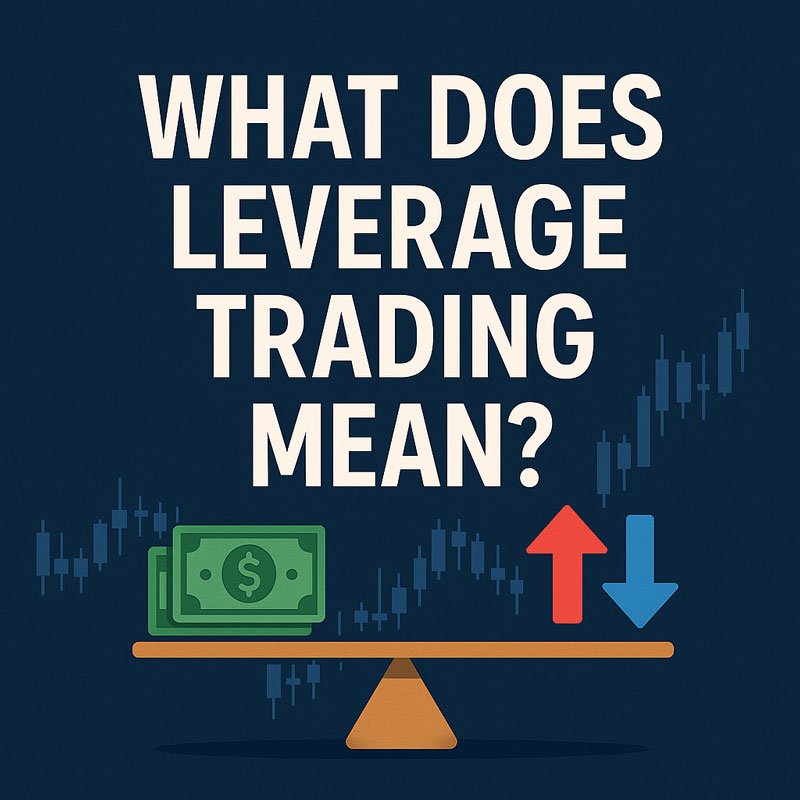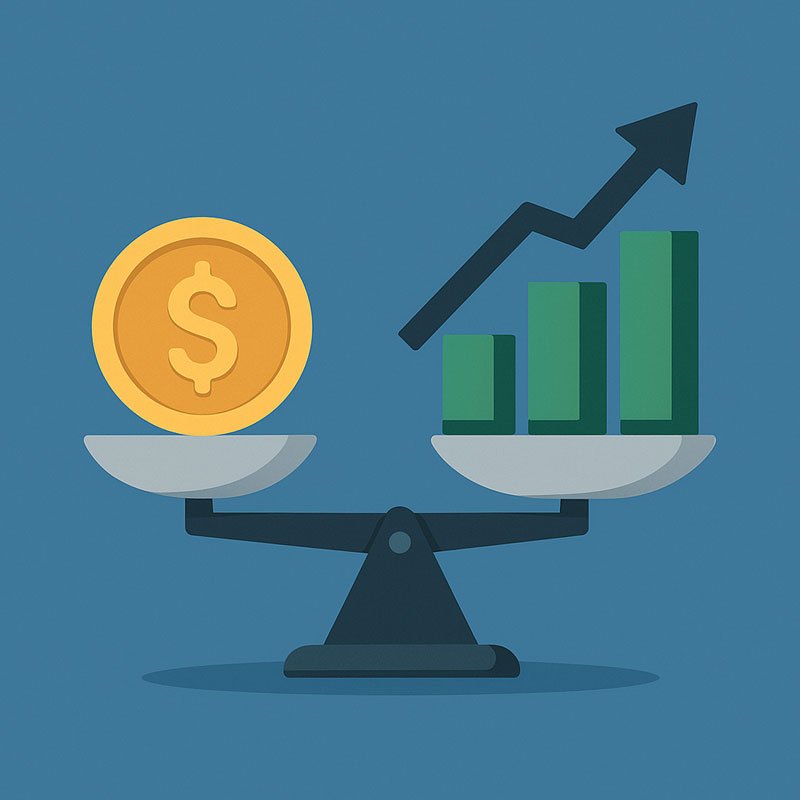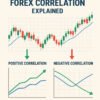Unlocking Trading Power – But at What Cost?
Ever wondered how some traders manage to control substantial amounts of currency with a relatively small initial investment? Imagine being able to potentially profit from market movements on $100,000 worth of currency while only putting down $1,000. This seemingly magical ability stems from a powerful tool in the world of forex trading called leverage trading.
In its simplest form, leverage trading is like borrowing funds from your broker to increase the potential size of your trades. It allows you to control a larger position in the market than your actual capital would typically permit. While this can significantly amplify potential profits, it’s crucial to understand that it also magnifies potential losses.
Understanding what does leverage trading mean and how it functions is paramount for anyone venturing into the dynamic world of forex. It’s a double-edged sword, offering exciting opportunities for growth but also carrying significant risks if not handled with caution and knowledge. This guide will walk you through the intricacies of leverage in forex, explaining its mechanics, benefits, drawbacks, and essential strategies for using it responsibly.
What Does Leverage Trading Mean? Demystifying the Concept

At its core, leverage trading in forex allows traders to control a larger amount of currency than the funds they have in their trading account. Think of it as a loan provided by your broker, enabling you to increase your market exposure.
Let’s illustrate this with a simple example. Suppose a forex broker offers a leverage of 1:100. This means that for every $1 of your own capital, you can control $100 in the market. So, with just $1,000 in your account, you could potentially open a trade worth $100,000.
To understand this further, let’s define some key terms:
- Margin: This is the initial capital or security deposit that you need to put up to open and maintain a leveraged position. It’s a percentage of the total trade size. In the example above with 1:100 leverage and a $100,000 position, the margin required might be $1,000 (1% of $100,000).
- Position Size: This refers to the total nominal value of the currency you are trading. With leverage, your position size can be significantly larger than your account balance.
- Equity: This is the total value of your trading account, including any unrealized profits or losses from your open positions. Your margin requirement is always a percentage of your position size, and you must maintain sufficient equity to keep your positions open.
Therefore, the meaning of leverage in forex lies in its ability to multiply your trading power, allowing you to participate in larger market movements with a smaller capital outlay. This is a key characteristic that attracts many traders to the forex market.
Why Do Traders Use Leverage? The Allure of Amplification
Traders employ leverage for several compelling reasons:
- Amplify Profits with Small Capital: This is the primary draw. Leverage allows traders with limited capital to potentially generate significant profits from relatively small price movements. If the market moves in their favor, the returns are calculated on the entire leveraged position, not just their initial margin.
- Access to Larger Positions: Without leverage, many traders would only be able to open very small positions, limiting their potential gains. Leverage provides access to more substantial trading volumes, increasing the opportunity for profit.
- Increased Market Exposure: By controlling larger positions, traders gain greater exposure to market fluctuations. Even small percentage changes in currency prices can translate to more meaningful profits (or losses) on a leveraged trade.
- More Trading Opportunities: Leverage can free up capital that would otherwise be tied up in margin requirements, allowing traders to potentially open multiple positions or explore different trading opportunities simultaneously.
Understanding these benefits is crucial, but it’s equally important to be aware of the inherent risks associated with leverage. Before choosing a broker, it’s wise to research their leverage offerings and policies. You can find more information on this in our guide on how to choose a forex broker with leverage.
How Leverage Works in Forex Trading: Putting it into Practice

Let’s delve into a practical example to illustrate how leverage functions in forex trading.
Imagine you have $1,000 in your trading account and your broker offers a maximum leverage of 1:50. This means you can control positions up to 50 times your initial capital, which is $50,000 ($1,000 x 50).
You decide to open a long position (betting the price will go up) on the EUR/USD currency pair at an exchange rate of 1.1000. You use your full available leverage to open a position worth $50,000.
- Without Leverage: If you were trading without leverage, your $1,000 might only allow you to buy a much smaller amount of EUR/USD. A small price increase would result in a proportionally small profit.
- With 1:50 Leverage: By controlling a $50,000 position, even a small upward movement in the EUR/USD exchange rate, say to 1.1050 (a 0.45% increase), would result in a profit of $250 ($50,000 x 0.0050). This represents a 25% return on your initial $1,000 margin.
However, the reverse is also true. If the EUR/USD price had fallen by the same amount (0.45%), you would have incurred a $250 loss, representing a 25% loss on your initial capital.
Read me: Forex Basics for Beginners – Learn Trading Step by Step
Calculating Margin Requirement:
The margin requirement is the amount of money you need to have in your account to open and maintain a leveraged position. It’s calculated based on the leverage offered and the size of your trade.
For example, with a leverage of 1:100, the margin requirement is 1% of the position size. For a $10,000 trade, the margin needed would be $100.
Leverage vs. Position Size:
The following table illustrates how different leverage ratios affect the maximum position size you can control with a $5,000 trading account:
| Leverage Ratio | Maximum Controllable Position |
|---|---|
| 1:10 | $50,000 |
| 1:20 | $100,000 |
| 1:50 | $250,000 |
| 1:100 | $500,000 |
| 1:200 | $1,000,000 |
| 1:500 | $2,500,000 |
Pros and Cons of Leverage Trading: Weighing the Scales
Leverage offers enticing advantages but also carries substantial risks that every trader must carefully consider.
✅ Pros of Leverage Trading:
- Increased Buying Power: As highlighted, leverage amplifies the amount of capital you can trade with, allowing you to take advantage of more market opportunities.
- Potential for Higher Returns: When the market moves favorably, the profits generated on the larger, leveraged position can be significantly higher than what would be possible with your own capital alone.
❌ Cons of Leverage Trading:
- Amplified Losses: This is the most critical risk. Just as leverage can magnify profits, it equally magnifies losses. A losing trade can deplete your capital much faster when using high leverage.
- Margin Calls and Liquidation Risk: If your trades move against you and your account equity falls below the broker’s required margin level, you may receive a margin call. This is a demand from your broker to deposit additional funds to bring your account back up to the required margin. If you fail to meet the margin call, the broker has the right to automatically close your open positions to limit further losses – this is known as liquidation.
- Emotional Pressure and Overtrading: The potential for quick and large gains (and losses) can lead to emotional decision-making and overtrading. Traders might be tempted to take on excessive risk in pursuit of quick profits, often leading to detrimental outcomes.
Tips for Using Leverage Safely: Navigating the Risks

While leverage can be a powerful tool, it requires a disciplined and strategic approach. Here are some essential tips for using leverage safely:
- Use Stop-Loss Orders: Always implement stop-loss orders on your trades. A stop-loss order is an instruction to your broker to automatically close your position if the price reaches a predetermined level, limiting your potential losses.
- Start with Low Leverage: If you are new to forex trading, begin with the lowest leverage your broker offers (e.g., 1:10 or even lower if available). This will allow you to gain experience and understand the market dynamics without exposing yourself to excessive risk.
- Understand Margin Requirements: Fully grasp your broker’s margin policies and ensure you have sufficient capital in your account to cover potential drawdowns and avoid margin calls. Monitor your account equity regularly.
- Choose Regulated Brokers with Clear Leverage Policies: Opt for reputable and regulated brokers who provide transparent information about their leverage offerings, margin requirements, and risk disclosures.
What Is the Best Leverage for Beginners? A Cautious Approach
For beginners venturing into forex, the best leverage is generally low leverage. A range of 1:10 to 1:30 is often recommended as a starting point.
Here’s why lower leverage is safer for newcomers:
- Reduced Risk Exposure: Lower leverage limits the size of the positions you can take, thereby reducing the potential for significant losses on any single trade.
- Greater Margin for Error: With lower leverage, you have more buffer in your account to withstand market fluctuations without triggering a margin call.
- Focus on Learning: Starting with lower leverage allows you to focus on understanding market dynamics, developing trading strategies, and managing your emotions without the added pressure of high-stakes, highly leveraged trades.
It’s important to note that different brokers offer varying leverage options. Some popular brokers like IC Markets, Exness, and XM provide a range of leverage choices. Beginners should carefully research and compare the leverage offerings and regulatory standing of different brokers before making a decision.
Leverage – A Tool Demanding Respect
In conclusion, leverage in forex trading is a powerful tool that can significantly amplify both potential profits and potential losses. Understanding what does leverage trading mean, how it works, and its associated risks is absolutely crucial for anyone looking to participate in the forex market.
Remember that leverage is not free money; it’s essentially a loan that needs to be managed responsibly. Treat it with the respect it deserves, prioritize education and risk management, and always trade within your risk tolerance.
Frequently Asked Questions (FAQs) About Leverage Trading in Forex
Is leverage trading suitable for beginners?
While leverage can amplify potential profits, it also significantly increases the risk of losses. Beginners are generally advised to start with low leverage (e.g., 1:10 to 1:30) to gain experience and understand market dynamics before considering higher leverage.
What happens if I use too much leverage?
Using excessive leverage can lead to rapid depletion of your trading capital if the market moves against your positions. It also increases the risk of margin calls and forced liquidation of your trades.
Can I lose more money than my initial deposit with leverage?
Yes, it is possible to lose more than your initial deposit when trading with leverage, especially if you don’t use risk management tools like stop-loss orders and if the market experiences significant volatility.
How do brokers make money from leverage?
Brokers typically earn through spreads (the difference between the buying and selling price of a currency pair) and sometimes through commissions on trades. Leverage itself isn’t a direct revenue source but facilitates larger trading volumes, which can increase a broker’s earnings.
Is higher leverage always better?
No, higher leverage is not necessarily better. While it offers the potential for greater profits, it also comes with significantly higher risks. The “best” leverage depends on a trader’s experience, risk tolerance, and trading strategy.
Where can I learn more about leverage trading?
You can learn more about leverage trading through educational resources provided by reputable forex brokers, online trading courses, financial websites like Investopedia [external authority link], and books on forex trading.












